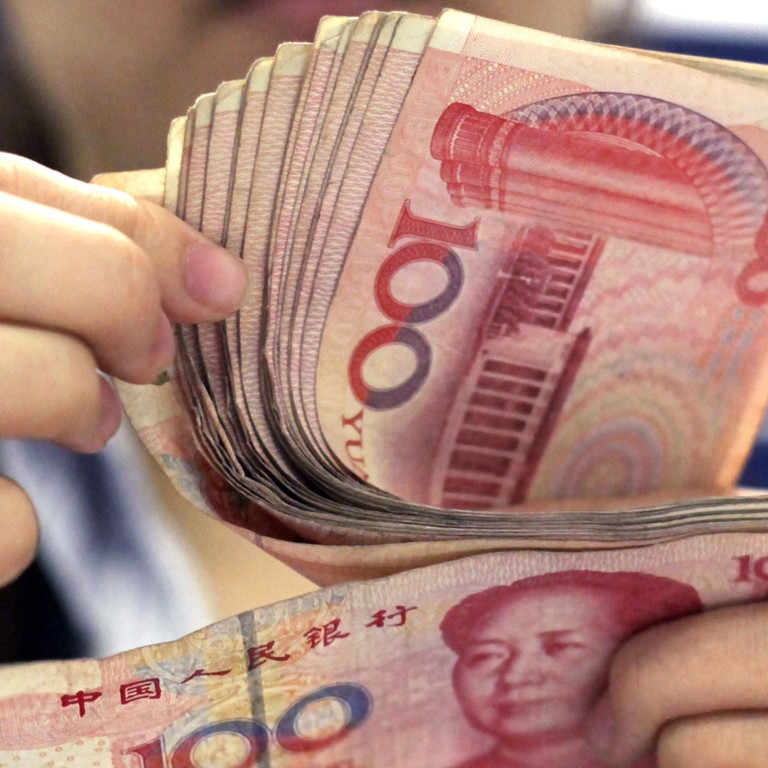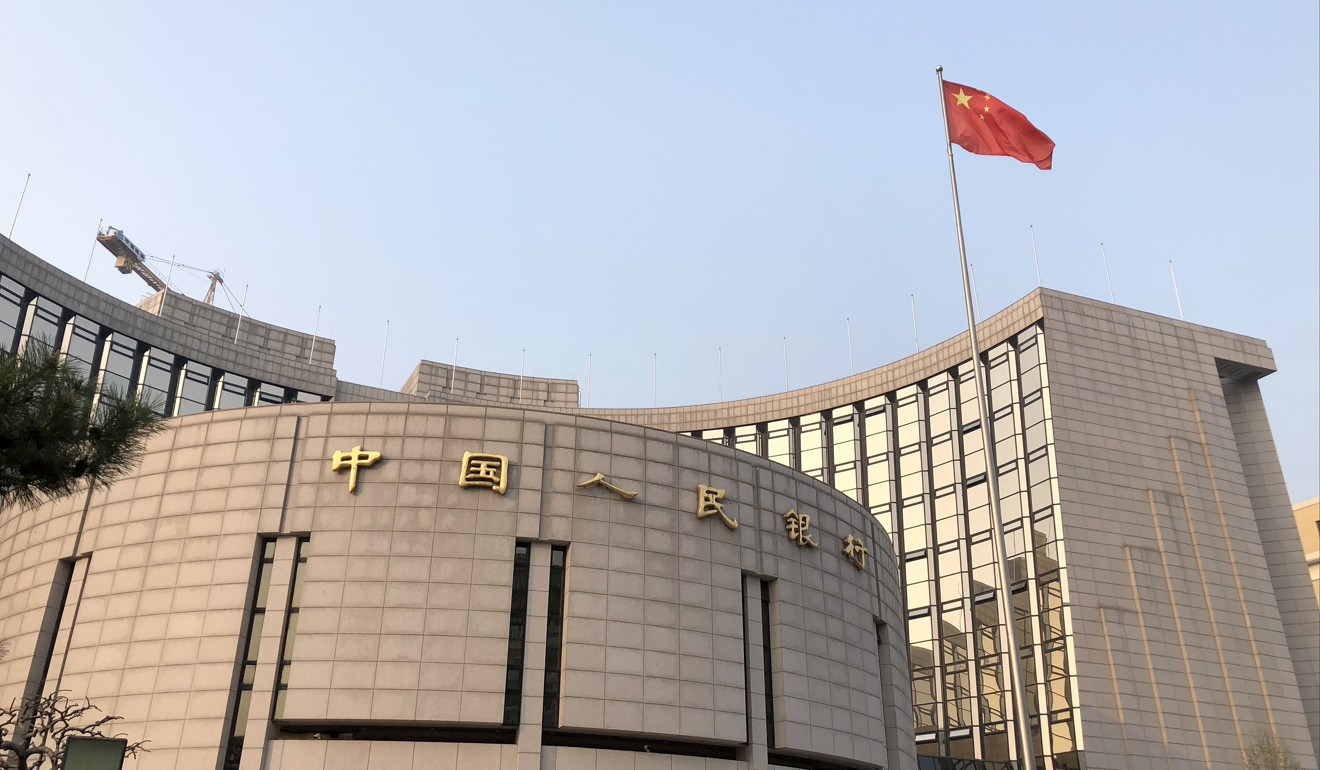
Chinese banks lend record amounts as government seeks to stop economic slowdown
- Banks extended US$2.4bn in credit last year as policymakers aimed to boost loans to private sector
- People’s Bank insists it will not ‘flood’ the banking system with cash to stimulate the economy
China’s banks extended a record 16.17 trillion yuan (US$2.4 trillion) in net new loans last year the People’s Bank of China said on Tuesday, as policymakers pushed lenders to fund cash-strapped firms to prop up the slowing economy.
The new figure, well above the previous record of 13.53 trillion yuan in 2017, is an indication that the bank has been moderately aggressive in using monetary policy to stimulate the economy, which slowed sharply as a result of the trade war with the US.
Outstanding yuan loans were up 13.5 per cent at the end of 2018 from a year earlier, according to the central bank data.

The People’s Bank cut the amount of cash that banks have to hold in reserve four times last year and again this month. The latest reduction in the reserve requirement ratio will pump 1.5 trillion yuan of additional liquidity into the banking system to spur more lending.
Chinese Premier Li Keqiang instructed the central bank to make cuts of the reserve ratio a central part of Beijing’s efforts to bolster economic growth.
China is also facing slowing global demand amid the US trade war, which is hurting confidence among investors and consumers.
Zhu Hexin, deputy governor at the People’s Bank of China, told a media briefing that the central bank will maintain a “prudent” monetary policy this year while keeping the yuan exchange rate “basically stable at a reasonable and balanced level”.
“Maintaining a sound monetary policy does not mean that it will be inflexible,” explained Zhu.
Economic impact of China’s tax cut is estimated at US$300 billion
“Monetary conditions should be matched with the requirements for maintaining stable economic growth and prices, keeping a moderate degree of tightness, neither too loose nor too tight [in terms of banking system liquidity]”.
Some of reserve ratio cuts released liquidity targeted specifically at small and medium-sized enterprises, which have been hit hardest by the trade war.
In addition, the central bank has stepped up support for private bond financing to increase the availability of financial support for smaller firms.
Despite the central bank’s steps to increase lending to small and medium-sized firms, they continue to complain that lack of access to credit, or the high cost when it is available, is preventing them from investing.
Zhu said that the central bank has since made progress and would continue to guide lenders that still did not want to lend to private enterprises, whose credit risk is higher.
“We must continue to use policy support to guide [bank lending] … to solve the problem that some banks dare not lend, do not want to lend, and will not lend [to private enterprises].”
Zhu said the central bank should improve existing monetary policy measures rather than turn to cutting its benchmark interest rates to boost lending.
Zhu also stressed that the People’s Bank would not resort to “flood-like” monetary stimulus.
2½-day weekend to spend out of downturn? Chinese aren’t buying
The central bank also released credit data for December on Tuesday. New net yuan lending stood at 1.08 trillion yuan for the month, down from November’s 1.25 trillion yuan but an increase of 499.5 billion yuan for the same month in 2017.
The loan growth exceeded analysts’ forecasts of 825 billion yuan, according to a Bloomberg survey.
Broad M2 money supply rose by 8.1 per cent in December, up 0.1 per cent from November and the same as December in 2017.
Total social financing (TSF) – a broad measure of credit and liquidity in the economy that includes loans, bonds and non-traditional instruments – grew to 1.59 trillion yuan in December, more than the net 1.52 trillion yuan in November.
This marked an increase of 3.3 billion yuan compared with the same month in 2017, and was above market expectations of 1.3 trillion yuan.
China December trade data bad, likely to get worse this year
Ruan Jianhong, director of the People’s Bank statistics and analysis department, said December’s credit data showed that new liquidity released by the central bank had helped to transmit ample and stable liquidity into the economy.
Despite the stronger than expected growth in credit, the impact of monetary policy easing has been mixed, according to a report by JP Morgan.
While the central bank’s liquidity operations have brought down market rates, banks’ lending rates have not changed as much, it said – meaning borrowing costs are still high.
The report also said the People’s Bank has maintained a tight credit policy in spite of a series of reserve ratio cuts since last year to keep its focus on deleveraging and concluded the central bank was unlikely to relax its stance on reducing systemic risks.

